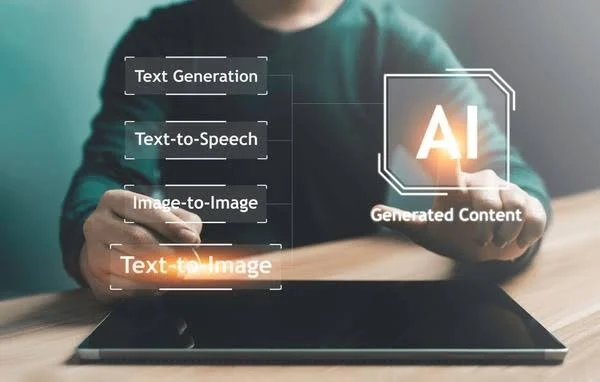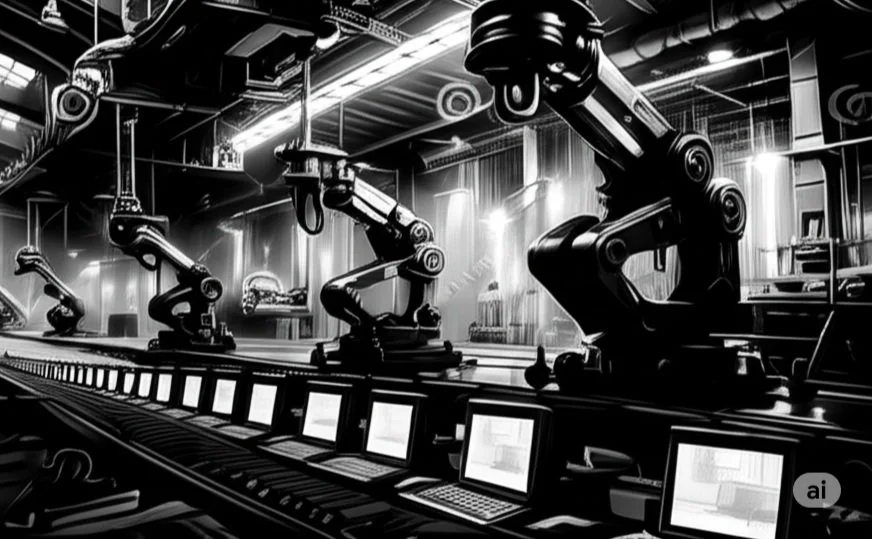The Fourth Acronym That Might Just Eat the Others
UGC. CGC. EGC.
Three acronyms that get way too much airtime in marketing decks—and not nearly enough innovation to back them up. At this point, calling them “new” is like launching a blog in 2025. Sure, they work. But they’re not what’s moving the industry forward.
Meanwhile, in the background, a fourth acronym is quietly building the infrastructure that will reshape how we create, distribute, and personalize content: AIGC — AI-Generated Content.
Let’s break it down, starting with the “usual suspects.”
UGC: The Nostalgia Play
User-Generated Content was the darling of the early internet. It still holds power when done right. The RealReal let a superfan take over its Substack, no brand manual, no approval process. The result? Pure enthusiasm that converted.
It worked — because it was real.
But let’s be honest: this isn’t news. It’s vintage.
CGC: The Influencer Era (Now with Fewer Scripts)
Creator-Generated Content is just influencer marketing with better PR. The twist? Brands are finally letting creators speak in their own voice.
Good for them — it only took a decade.
Again, it works. But it’s not revolutionary. It’s common sense, dressed up as a trend.
EGC: The Untapped Power of the Team
Employee-Generated Content is the rising star of brand storytelling. The problem? Most companies still haven’t given their teams permission to be authentic.
Your people are already posting — just not for you.
Unlock that, and you’ve got trust, reach, and realness.
But let’s not pretend this is groundbreaking. It’s an overdue culture shift.
Enter AIGC: The Acronym No One Wants to Talk About
Now for the real plot twist: AIGC, or AI-Generated Content.
Not templates. Not automation. We’re talking about machines that create — writing, adapting, personalizing, and scaling content in real time.
Not just tools. A new layer of creative infrastructure.
Yes, it raises eyebrows. Deepfakes. Hallucinations. Copyright headaches.
But here’s the truth: AIGC is already being used to generate marketing campaigns, product copy, technical documentation, and personalized digital experiences at scale.
And the legal system? It’s slowly catching up — and, notably, leaning in favor of AI.
U.S. Courts Have Spoken: AI Can Create Without Copyright
Recent rulings in the U.S. have declared that AI-generated works without human authorship are not eligible for traditional copyright protection. The logic? If no human created it, it doesn’t qualify for protection.
This changes the game.
It opens the door for more legal use of AI outputs — without the looming fear of litigation.
It forces outdated models of authorship and ownership to evolve.
And it creates an environment where content can be more adaptive, collaborative, and scalable.
Some see this as a threat.
Others see it for what it is: an opportunity to rethink how we define creativity — and who gets to claim it.
AIGC Won’t Kill Creativity. It’ll Multiply It.
No, AI won’t replace creative professionals.
It will replace what’s repetitive, slow, and expensive.
And in doing so, it will free up time and mental space for the truly human parts: direction, emotion, concept, originality.
While some teams are still debating whether an intern can post a Reel, others are using AI to generate thousands of hyper-targeted assets in real time — by geography, behavior, language, even sentiment.
The next big campaign won’t come from a brainstorm in a conference room.
It’ll come from a creative director orchestrating machines — faster, smarter, more personalized than ever.
So the question isn’t if your brand will use AIGC.
It’s how soon you’re willing to stop pretending that the old acronyms are enough.
The future of content is human-led, AI-scaled.
And it’s already here, even in this text ;)
Infinity Factory
In today’s fast-moving marketing landscape, brands can no longer afford long, linear content production cycles. Enter the content factory — a transformative operational model where creativity, automation, and cultural relevance come together at scale.
At its core, the content factory starts with the client’s most valuable assets: brand identity, product catalogs, visual guidelines, past campaign materials, and increasingly, creator-generated content. These inputs are then paired with generative AI systems that analyze trends, consumer behaviors, and platform dynamics to produce a steady flow of customized marketing assets — from social posts and display ads to short-form videos and even influencer scripts.
The real game-changer here is automation powered by AI generative engines. What once took weeks of manual production — brainstorming, drafting, editing, approvals — can now be delivered in a matter of hours. AI models generate, adapt, and personalize materials for different audiences, channels, and cultural contexts, ensuring campaigns are both timely and hyper-relevant.
According to Deloitte, companies adopting content factories powered by AI have seen up to 10x more creative asset production with 50% faster turnaround times. And because these systems integrate real-time performance data, they continuously optimize assets based on what’s actually working, turning content creation into a live, adaptive process.
Another key advantage? Cultural agility. Content factories are designed to capture emerging trends — memes, viral formats, shifting consumer sentiment — and immediately reflect them in the materials they generate. This keeps brands ahead of the curve, not scrambling to catch up.
Importantly, this shift doesn’t replace human creativity — it augments it. Creative teams move upstream, focusing on strategic oversight, brand narrative, and innovation, while AI handles the scale and speed of execution.
The future of marketing production will not be purely human or purely automated. It will be co-created, blending human insight with machine intelligence. And forward-thinking brands that embrace the content factory model today are already shaping that future — leaving slower competitors behind.
Craft Is the Signature of Its Time
Throughout history, the relationship between technology and storytelling has always been intertwined. Every piece of content — whether in literature, film, or advertising — carries within it the constraints and possibilities of its time. Looking back, this becomes crystal clear. Take Toy Story, for example. Released in 1995, it was the first full-length feature film made entirely with 3D animation. At that moment, it represented the peak of what technology could deliver: plastic-looking characters, basic environments, limited textures. And yet, it was groundbreaking.
As the years went by, craft evolved hand-in-hand with platform capabilities. A Bug’s Life (1998) introduced more complex environments and organic textures. The Incredibles (2004) marked a leap in character motion and physics. By the time Up! premiered in 2009, Pixar could render soft fabrics, emotional subtleties, and sophisticated cinematic lighting. Each film didn’t just tell a story — it showcased exactly how far the technology of its time could go.
This timeline teaches us a fundamental truth about the present moment: real business objectives must be grounded in what current platforms can actually deliver — not in some hypothetical, idealized future.
We are living through a new wave of disruption, driven by generative AI, creative automation, and real-time personalization engines. Waiting for the “perfect scenario” would be like expecting Toy Story to look like Soul (2020) in 1995 — unrealistic and counterproductive. Craft will always reflect the tools and capabilities available at the time.
According to McKinsey, adopting generative AI in marketing can cut content development time by up to 40% and increase creative productivity by 30%. Accenture reports that companies aligning business goals with current tech maturity grow up to 2.4x faster than competitors operating with strategies disconnected from platform realities.
The takeaway? It’s not about waiting for the future — it’s about building with what we have today.
Whether it’s a story, a campaign, or a product experience, what we deliver — the craft — is, and always will be, a mirror of the technological context we’re working in. Acknowledging that isn’t limiting. In fact, it’s the cornerstone of pragmatic, high-impact innovation.
AI 2027 and the Marketing Mandate: Why Cognitive Enterprises Are Winning the Future
The “AI 2027” report is not just another trend forecast—it’s a wake-up call. For those of us working closely with global CMOs, innovation teams, and enterprise transformation leaders, the findings confirm patterns we’ve been tracking for years. This moment has been steadily approaching, shaped by the long-term strategic outlooks of leading global consulting firms—and now it’s arrived.
Back then, the message was clear: the future of competitive business would hinge on intelligent workflows, data-led decisions, and organizational models infused with AI. Not as an add-on, but as a foundational layer. The marketing industry, which thrives on both precision and creativity, is now the proving ground for what it truly means to become a cognitive enterprise.
AI 2027 confirms that future is no longer aspirational—it’s operational.
According to the report, 78% of leading marketing organizations have already embedded generative AI across creative development, campaign execution, and customer engagement. And we’re well beyond automation of repetitive tasks. We’re talking about:
AI-augmented creativity: Campaigns built and adapted in real-time, tuned to shifting consumer behaviors.
Hyper-personalized customer journeys: Every interaction powered by learning systems that optimize with each data point.
Cognitive operating models: Human + machine decision squads that outperform traditional structures in both speed and accuracy.
These are not projections. They’re happening now—and they match the outcomes we began tracking as early as 2020. Our analysis of early-stage cognitive enterprises showed that companies integrating AI into core workflows could expect up to 35% higher EBITDA growth over five years. AI 2027 confirms this, with fresh benchmarks: Marketing teams leveraging AI at scale are seeing 4x higher ROI on omnichannel campaigns, and some report 60% faster go-to-market times.
But here’s what should keep every marketing leader up at night: the acceleration of strategic obsolescence. The report is blunt—brands that lagged in AI adoption have lost, on average, 18 points of market share in just two years. It’s a staggering number. It reinforces what we’ve advised Fortune 500 clients for years: AI transformation is not a tech initiative—it’s an organizational reinvention.
What should leadership teams be doing today?
Three strategic imperatives:
Rewire your org model for human-machine collaboration: It's not about adding AI tools to legacy processes. It's about reshaping how work gets done.
Invest in cognitive infrastructure: Interoperable platforms, unified data, and distributed AI architecture aren’t optional—they're your new competitive base layer.
Upskill for hybrid talent: Tomorrow’s marketers need to master both storytelling and systems thinking. The creative strategist now codes, and the analyst now crafts narratives.
In short, AI 2027 isn’t describing a future—it’s holding up a mirror to the present. It validates what the cognitive enterprise framework always predicted: companies that center AI in their marketing strategy will shape markets. Those that don’t will be shaped by them—or left behind.





